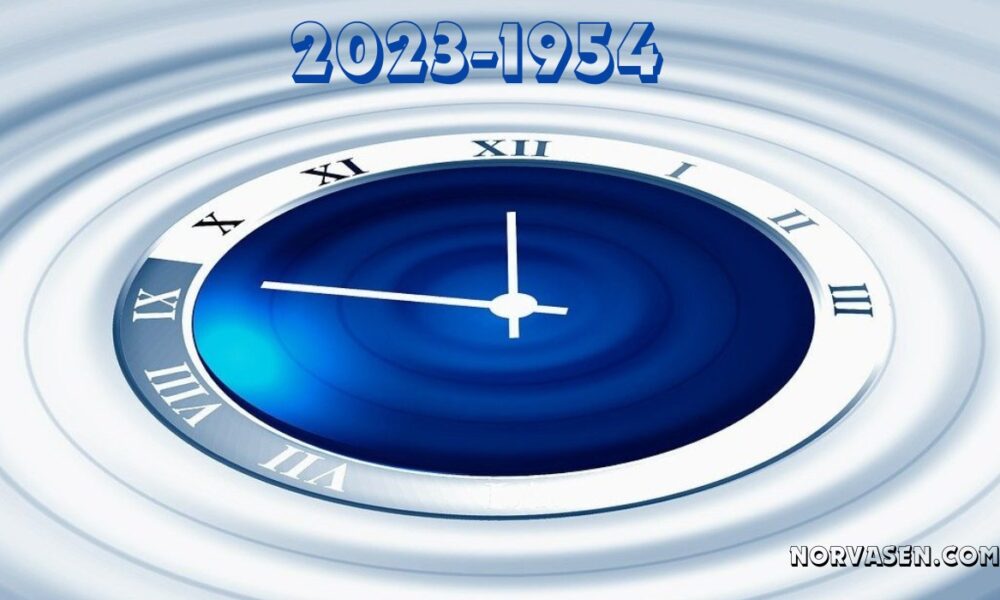Uncategorized
The Evolution of Technology and Society: 2023-1954

Numbers often tell a story, and the simple act of subtraction can reveal a fascinating glimpse into the vast changes that have occurred over time. In this case, subtracting 2023-1954 paints a picture of a world transformed across nearly seven decades. It’s a journey through technological advancements, social upheavals, and a cultural metamorphosis.
A World Unrecognizable: Technology
The year 1954 belonged to a very different technological era. While the transistor radio was a symbol of innovation, the internet, personal computers, and smartphones were figments of science fiction. Here’s a breakdown of some key technological leaps:
- Communication: Landlines dominated communication in 1954. International calls were expensive and cumbersome. Today, instant messaging, video conferencing, and social media platforms connect us globally at a fraction of the cost.
- Information Access: Knowledge in 1954 came from libraries, encyclopedias, and newspapers. Today, the internet allows access to a vast ocean of information at our fingertips. Search engines like Google provide answers in seconds, while online libraries offer a wealth of digitized content.
- Transportation: Cars were a luxury in the 1950s, and air travel was limited and expensive. Today, automobiles are commonplace, and airplanes connect continents in a matter of hours.
- Entertainment: Television was a relatively new invention in 1954, with limited channels and black-and-white broadcasts. Today, we have a plethora of entertainment options – streaming services, cable TV, video games with immersive graphics, and on-demand music.
Table 1: Technological Advancements (2023-1954)
| Technology | 1954 | 2023 |
|---|---|---|
| Communication | Landlines, telegrams | Internet, mobile phones, social media |
| Information Access | Libraries, encyclopedias, newspapers | Internet, search engines, online libraries |
| Transportation | Cars (limited), planes (expensive) | Cars (commonplace), airplanes (efficient), high-speed rail |
| Entertainment | Television (limited channels, black & white), radio | Streaming services, cable TV, video games, music streaming |
A Society Evolving: Social Change
The social landscape of 1954 was vastly different from today’s world. Here are some key areas of transformation:
- Civil Rights: The 1950s were marked by racial segregation and discrimination. Today, the fight for civil rights continues, but significant progress has been made towards equality.
- Gender Roles: Traditional gender roles were rigidly defined in 1954. Women were primarily expected to be homemakers, while men held the dominant role in the workforce. Today, women have broken barriers in education, careers, and political leadership.
- Family Structure: The “nuclear family” (married couple with children) was the norm in 1954. Today, family structures are much more diverse, with single-parent households, blended families, and same-sex couples becoming increasingly common.
- Social Mobility: Social class was more rigid in 1954. Upward mobility was challenging, and opportunities were often limited by one’s background. Today, while social mobility remains a complex issue, education and hard work can create greater opportunities for advancement.
Table 2: Social Changes (1954 vs. 2023)
| Social Aspect | 2023-1954 | 1954 |
|---|---|---|
| Civil Rights | Segregation, discrimination | Progress towards equality, ongoing fight for justice |
| Gender Roles | Rigid gender roles | More equality, women in leadership roles |
| Family Structure | Nuclear family dominant | Diverse family structures |
| Social Mobility | Limited upward mobility | Education and effort create opportunities |
A World Reshaped: Cultural Shifts
Culture is a reflection of societal values and beliefs. Here are some prominent cultural shifts:
- Music: Popular music in 1954 was dominated by genres like rock and roll and doo-wop. Today, music is a diverse global tapestry, with genres ranging from hip hop and electronic music to pop and country. Streaming services have revolutionized how we access music.
- Art & Literature: Art in the 1950s often reflected social realism and abstract expressionism. Today, artistic expression takes many forms, from digital art to performance art, while literature embraces a wider range of voices and perspectives.
- Fashion: 1950s fashion was characterized by conformity and elegance. Today, fashion is more individualistic and embraces diverse styles and trends. Fast fashion has revolutionized how clothes are
